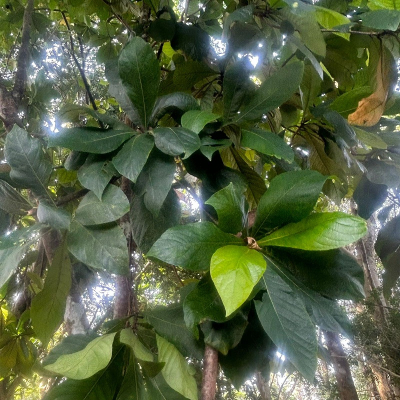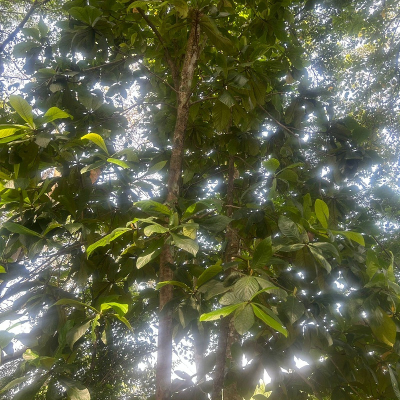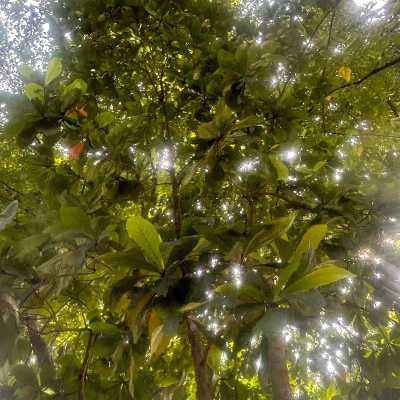Distribution and habitat: Extensively planted in tropical India, Burma and adjacent islands.
Botany: It is a tree of about 25 m height. Branches in horizontal whorls.
- Leaves: Alternate, clustered towards the end of the branches, very short petioled, obovate from a cordate but very narrow base, 15-25 cm; deciduous in the cold season, usually softly hairy when young, hairy or glabrous when adult, with 2 glandular depressions near the base of the midrib on the underside which are often obscure or wanting. The Leaves turn deep red in autumn before falling.
- Flowers: Spikes solitary, axillary, simple, grey or rusty tomentose or pilose, the upper flowers male, the lower hermaphrodite, the bracts minute. Calyx teeth are glabrous or nearly so within or without. Young ovary glabrous or hairy, 2.5-4 cm, ellipsoid, slightly compressed to show 2 ridges.
Properties: Diuretic, astringent, cardiotonic and antidysenteric. The leaf is sudorific, antirheumatic, antileprotic and anticephalalgic. leaf extracts have antibacterial and antifungal properties.
Chemical constituents: Husk and endocarp of fruit contain pentosans and tannins. Oil from kernel contains oleic, linoleic, palmitic and stearic acids. Heartwood and stem bark contain b-sitosterol and its palmitate. Heartwood in addition contains terminolic acid and triterpenic methyl esters. Leaves contain punicalagin, punicalin, terfluvina A and B, chebulic acid, benzoic acid, punicalagin, ursolic acid etc.
Uses: It is used in biliousness, bronchitis, leprosy, cutaneous diseases, headache, scabies and colic. Oil from the kernel is a substitute for almond oil. The leaf is used in scabies and colic. The aerial part of the plant is diuretic.
Propagation: By seed




